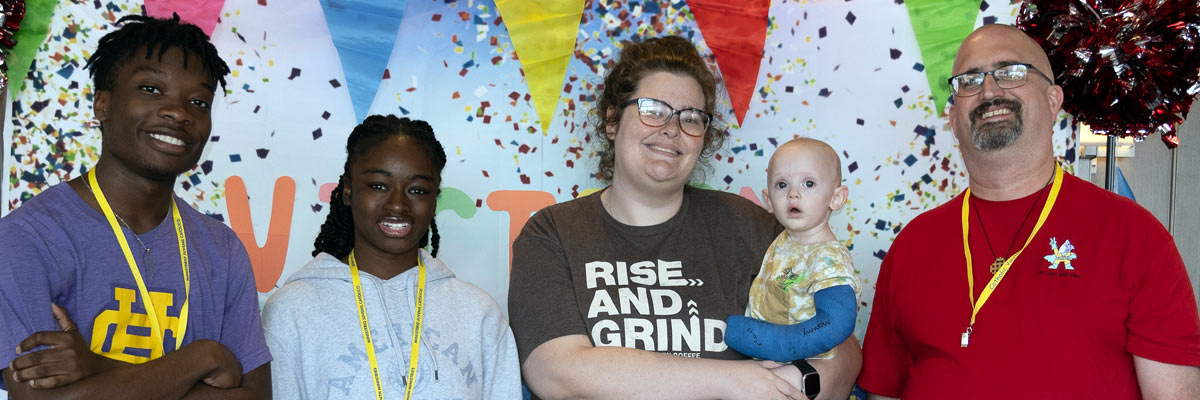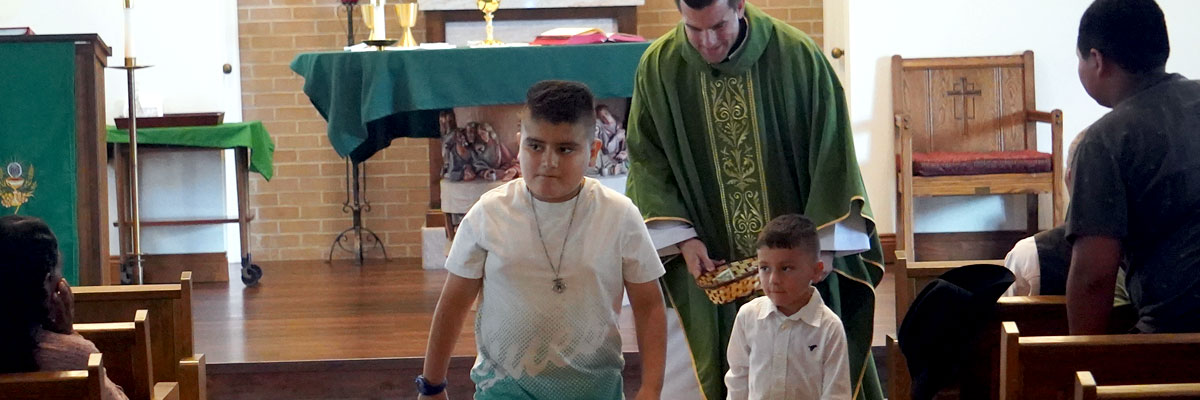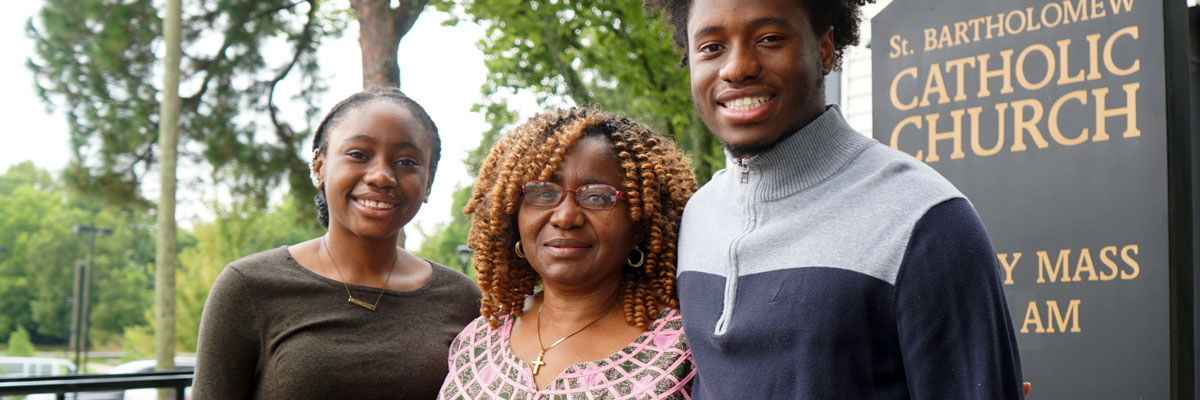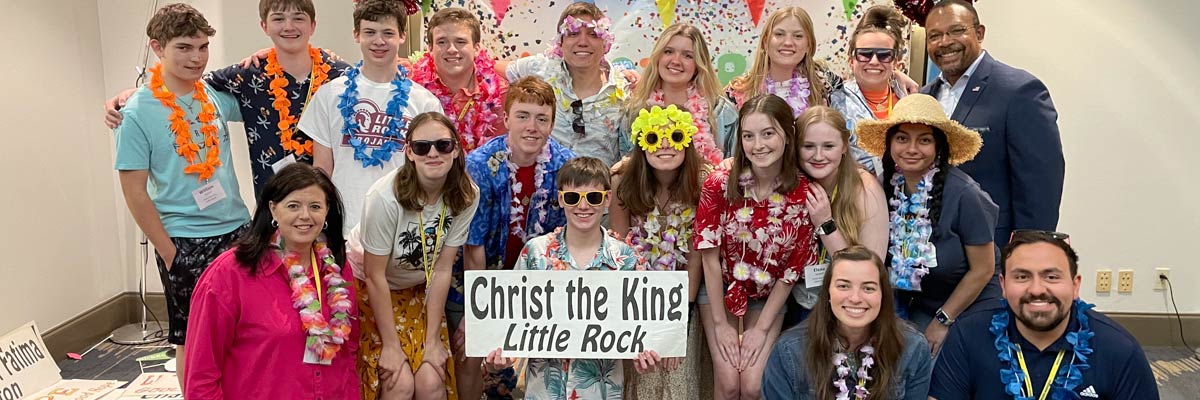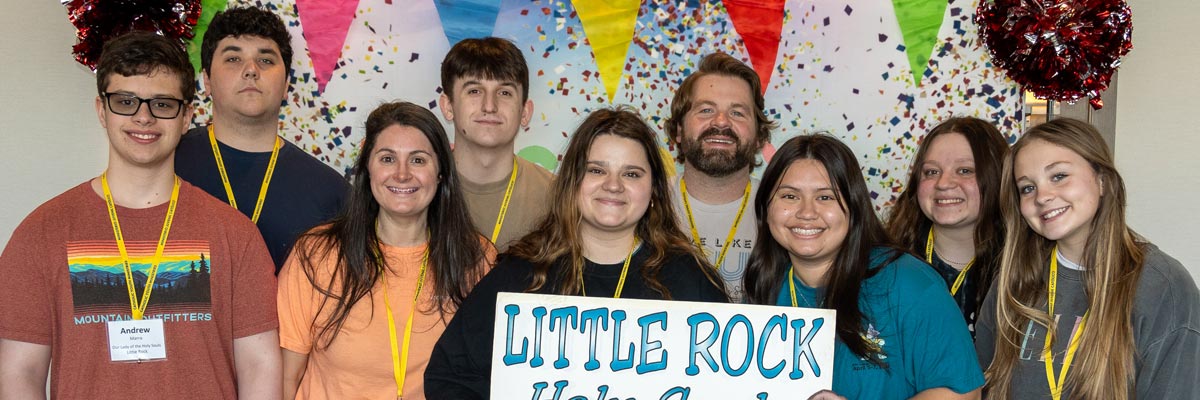Official Website of the
Catholic Diocese of Little Rock
The Gospels serve meals that connect us
Published: November 13, 2010
This is the eighth column in a 13-part series
By Cackie Upchurch
Director of Little Rock Scripture Study
In many of our churches, potluck lunches and suppers are commonplace. People from all walks of life and varying backgrounds can bring together their favorite dishes and rub elbows while sharing a meal. Such was not the case in the ancient Mediterranean world. Only those who shared the same background, social status and values would have broken bread together. A shared meal was a reflection of shared status and served to reinforce the connections and values already held in common.
 Imagine, then, how scandalous Jesus’ eating habits would have appeared at the time. He ate not only with his known friends, male and female, from around Galilee (Luke 10:38-42; John 12:2-3), but with sinners and outcasts (Mark 14:3-9; Luke 19:1-10) on the one hand, and religious leaders such as Pharisees (Luke 7:36; 11:38-41) on the other hand.
Imagine, then, how scandalous Jesus’ eating habits would have appeared at the time. He ate not only with his known friends, male and female, from around Galilee (Luke 10:38-42; John 12:2-3), but with sinners and outcasts (Mark 14:3-9; Luke 19:1-10) on the one hand, and religious leaders such as Pharisees (Luke 7:36; 11:38-41) on the other hand.
His choice of table companions and his actions during meals reveal a great deal about Jesus’ identity and mission. Simply by including a wide variety of people in occasions of breaking bread, Jesus was indicating that the kingdom of God was not reserved only for those who were deemed acceptable, but for all who responded to the invitation.
The obvious purpose in eating a meal is to satisfy one’s hunger. Physical hunger and the need for nourishment is a natural metaphor for the hunger of the human heart. Addressing the deeper human hungers for divine intimacy, meaning and forgiveness is characteristic of Jesus and the kingdom he embodied. The fact that meals were shared in common emphasizes that the community is the place where these deeper needs can be acknowledged and addressed.
On several occasions Jesus used the image of a banquet to describe the kingdom of God. “Blessed is the one who will dine in the kingdom of God,” he says (Luke 14:15). What follows is the story of a great dinner where the elite were invited but declined the invitation. The host then sent his servants to invite the “poor and the crippled, the blind and the lame.” The banquet, in this case an image for the kingdom of God, does not simply provide physical nourishment; it addresses the human hunger for acceptance and celebration.
In God’s kingdom there are no boundaries, and preference is given to those on the fringes of society. When a story is found in more than one Gospel account, we can deduce that it had a particular universal significance in the memory of the early Church. The story of Jesus feeding a multitude is found in six accounts in all four Gospels (Matthew 14:13-21; 15:32-39; Mark 6:34-44; 8:1-8; Luke 9:10-17; John 6:1-15).
Finding abundance out of so little (a few loaves and fish to feed thousands) has become legendary. We tell our children about it, and when graces or unexpected favors occur in our lives, we sometimes refer to the “loaves and fishes” as a shorthand way of testifying to God’s generosity.
But what did Jesus do at this large meal on a hillside in Galilee? He took the bread, blessed it, broke it and then gave it to his disciples to share with the crowd. These actions prefigure the eucharistic actions of the final meal he shared with his followers in Jerusalem on the night he was arrested (Matthew 26:26-30; Mark 14:22-26; Luke 22:14-20). And these actions are repeated in the post resurrection scene with Jesus and the two followers who journeyed to Emmaus (Luke 24:3-35) and recognized him in the breaking of the bread.
These actions of taking, blessing, breaking and giving become the actions of the Church in its eucharistic celebrations. We do these things in memory of Jesus as he instructed in Luke 22:19. This kind of remembering makes the death and resurrection of Jesus alive in our midst, connecting us to the salvation Christ offered once and for all in a most tangible way.
Another post-resurrection account depicts Jesus once again sharing a meal with his followers, this time as the host (John 21:1-14). After a fruitless night fishing on the Sea of Galilee (also known as the Sea of Tiberius), seven of Jesus’ followers are surprised to be told by a stranger to go out again. Back on the water, now with bulging nets full of fish, they know the stranger was Jesus. Upon coming to shore, he is already preparing a meal over a charcoal fire. There was no need for them to ask “Who are you?” The meal itself revealed that it was indeed Jesus, once again satisfying their hungers.
Study Questions
- Identify some of the elements that can make a meal memorable and meaningful for you. Why do we often celebrate accomplishments or even mourn our losses by sharing a meal with others?
- How does it effect your appreciation of the ways Jesus shared meals with others to know a little bit about the dining customs of the ancient Middle East?
- When has the meal of the Eucharist provided a deeper revelation of Jesus for you?
- How have the Gospel stories of Jesus' meals challenged you to be more inclusive?
This article was originally published in Arkansas Catholic Nov. 13, 2010. Copyright Diocese of Little Rock. All rights reserved. This article may be copied or redistributed with acknowledgement and permission of the publisher.


